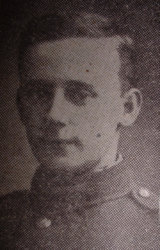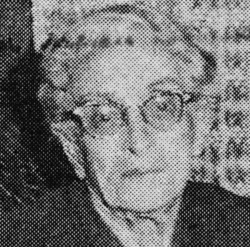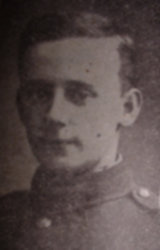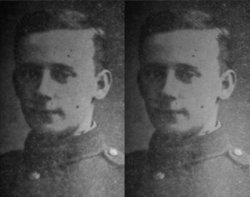First of all, I am a complete novice when it comes to photographic restoration etc., and would be very grateful for any help or advice or preferably tutelage regarding the following.
I have over one hundred and fifty old halftone newspaper pictures (photographs of the original pictures). All pictures are head and shoulder shots and reasonably small, my finished printed size will be approximately 50mm x 80 mm, portrait (please see attached).
I need to learn how to “shop” the pictures so that they will look at their best when re-printed on plain white paper.
I have recently downloaded a 30 day free trial of PSP 2020 (only because PhotoShop was a shorter trial) and have played about with Moire Pattern Removal and sharpness etc., but I don’t feel that I am getting the best out of the photographs. I just don’t have the necessary experience. When I know exactly what I need to do I will then purchase the appropriate software, whatever that may be.
Having asked for help on a PSP forum, I have learnt that my best option would be to use a Fast Fourier Transform (FFT) plug-in. I noticed on another forum that there is one available for Photoshop called “FT Pattern Suppressor”. Would this solve my problem?
Given the large number of pictures that I will need to process, I had hoped for a simpler solution, but if this is what it will require to achieve the best results with these images then so be it
Also if anyone has any tips on what could be applied to the image post Pattern Suppression to refine it further, it would be appreciated, bearing in mind that I have a large number to process.
If anyone with the relevant experience would like to “take me under their wing” and teach me how to get the best results I would be extremely grateful.
Kind regards,
Pete.

I have over one hundred and fifty old halftone newspaper pictures (photographs of the original pictures). All pictures are head and shoulder shots and reasonably small, my finished printed size will be approximately 50mm x 80 mm, portrait (please see attached).
I need to learn how to “shop” the pictures so that they will look at their best when re-printed on plain white paper.
I have recently downloaded a 30 day free trial of PSP 2020 (only because PhotoShop was a shorter trial) and have played about with Moire Pattern Removal and sharpness etc., but I don’t feel that I am getting the best out of the photographs. I just don’t have the necessary experience. When I know exactly what I need to do I will then purchase the appropriate software, whatever that may be.
Having asked for help on a PSP forum, I have learnt that my best option would be to use a Fast Fourier Transform (FFT) plug-in. I noticed on another forum that there is one available for Photoshop called “FT Pattern Suppressor”. Would this solve my problem?
Given the large number of pictures that I will need to process, I had hoped for a simpler solution, but if this is what it will require to achieve the best results with these images then so be it
Also if anyone has any tips on what could be applied to the image post Pattern Suppression to refine it further, it would be appreciated, bearing in mind that I have a large number to process.
If anyone with the relevant experience would like to “take me under their wing” and teach me how to get the best results I would be extremely grateful.
Kind regards,
Pete.




